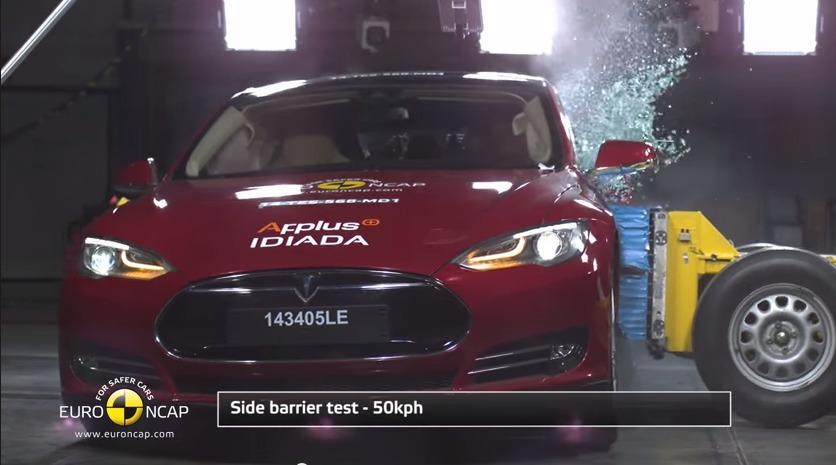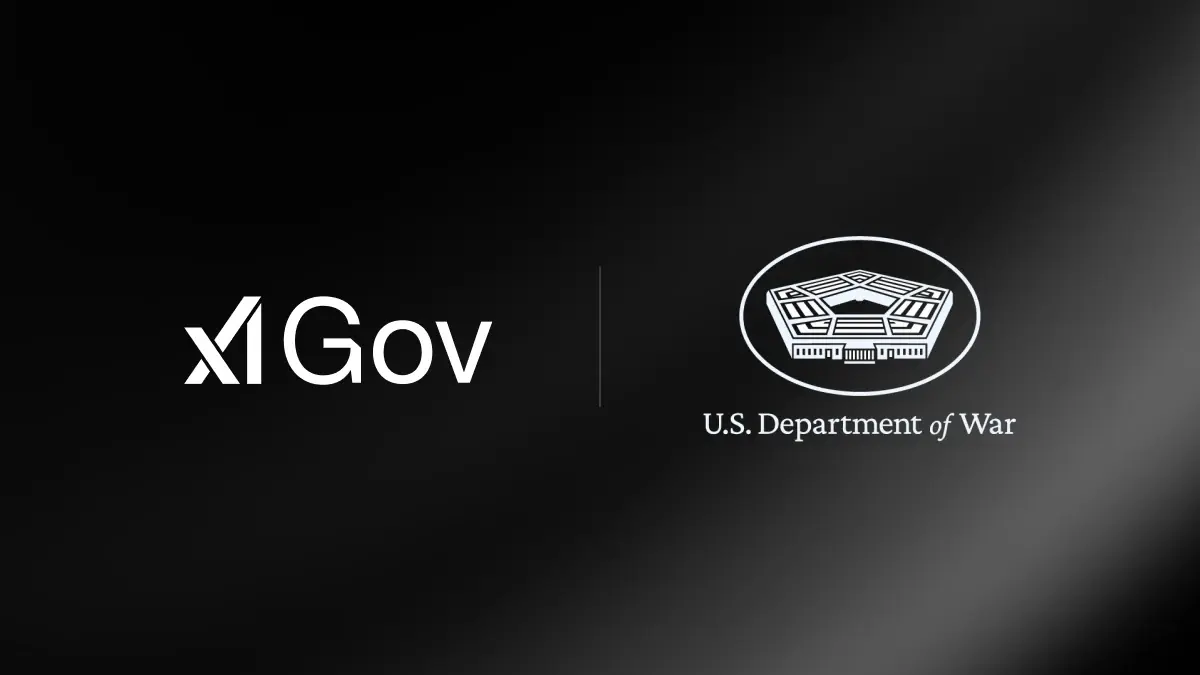News
Model S Scores 5-Star Rating in Euro NCAP Crash Test

Euro NCAP, the leading organization that provides independent safety and crash testing to motoring consumers across Europe awarded the Tesla Model S with a perfect 5-star rating.
The organization ranked the Model S based on safety for the following categories: adult occupant, child occupant, pedestrian, and safety assist features. Euro NCAP scored the Model S with exceptionally high scores for its side impact protection however frontal impact dummy kinematics indicated that head protection did not fare. Testing indicated that there was insufficient inflation in the airbag to prevent the head from flattening out the airbag and coming in contact with the fascia.
According to Euro NCAP, “Tesla investigated the issue and found an error in the airbag calibration software supplied by the vendor. Euro NCAP has been informed that this error has been corrected in all vehicles supplied to customers.”
See the full results of the Tesla Model S safety and crash testing below.
[learn_more caption=”Safety Test Results” state=”open”]
Tesla Model S Euro NCAP Safety Test Results:
Adult Occupant
The passenger compartment remained stable in the frontal impact. Readings from the passenger dummy indicated good protection of all body areas except the head. Analysis of the dummy kinematics showed that the airbag on the passenger side had ‘bottomed out’ i.e. there was insufficient inflation to prevent the head flattening the airbag and coming into contact with the facia, through the airbag material. Although the calculated injury parameters were not hazardous, protection of the passenger head was penalised and rated as adequate. Dummy readings indicated good protection of the knees and femurs of the driver and passenger. Tesla showed that a similar level of protection would be provided to occupants of different sizes and to those sat in different seating positions. In the side barrier test, the Model S scored maximum points with good protection of all body regions. In the more severe side pole test, dummy measurements of rib compressions indicated marginal protection of the chest. Protection against whiplash injury in the event of a rear-end collision was rated as good for the front and rear seats.
Child Occupant
The Model S scored maximum points for its protection of the child dummies in the dynamic tests. Both dummies were seated in rearward-facing restraints and showed good protection in the frontal impact. In the side impact, both dummies were properly contained within the protective shells of their restraints, minimising the risk of head contact with parts of the vehicle interior. The front passenger airbag can be disabled through the user menu, allowing a rearward-facing restraint to be used in that seating position. However, the interface is not clear in all languages about the actions being taken to set the airbag status and the system was not rewarded. All of the restraints for which the car is designed could be properly installed and accommodated with the exception of the Group I universal restraint in the rear outboard seats. While the seat could be installed, the seat cushioning made engagement of the ISOFIX probes difficult. Integral child restraints are available as an optional third row in the Model S.
Pedestrian
The Tesla is equipped with an ‘active’ bonnet. When the system detects that a pedestrian has been struck, actuators lift the bonnet to provide greater clearance to hard structures underneath. Tesla showed that the system detects all statures robustly over a range of speeds and the car was tested with the bonnet in the deployed position. Protection was adequate or marginal over most of the surface of the bonnet with poor results recorded only at the base of the windscreen and on the stiff screen pillars. The bumper offered predominantly good protection to pedestrians’ legs while the front edge of the bonnet gave good results towards the centre of the car but poor results at the outside edges.
Safety Assist
Electronic stability control is standard equipment on the Model S. A seatbelt reminder is standard for the front and rear seats, as is a lane departure warning system that met Euro NCAP’s requirements. The Model S has a speed assistance system that can recognise the local speed limit and issue a warning to the driver when that limit is exceeded. The Model S is not equipped with an autonomous emergency braking system.
[/learn_more]
ALSO SEE: [Video] Tesla Model S Drifting at Gumball 3000 Festival

News
Waymo sues Santa Monica over order to halt overnight charging sessions
In its complaint, Waymo argued that its self-driving cars’ operations do not constitute a public nuisance, and compliance with the city’s order would cause the company irreparable harm.

Waymo has filed a lawsuit against the City of Santa Monica in Los Angeles County Superior Court, seeking to block an order that requires the company to cease overnight charging at two facilities.
In its complaint, Waymo argued that its self-driving cars’ operations do not constitute a public nuisance, and compliance with the city’s order would cause the company irreparable harm.
Nuisance claims
As noted in a report from the Los Angeles Times, Waymo’s two charging sites at Euclid Street and Broadway have operated for about a year, supporting the company’s growing fleet with round-the-clock activity. Unfortunately, this has also resulted in residents in the area reportedly being unable to sleep due to incessant beeping from self-driving taxis that are moving in and out of the charging stations around the clock.
Frustrated residents have protested against the Waymos by blocking the vehicles’ paths, placing cones, and “stacking” cars to create backups. This has also resulted in multiple calls to the police.
Last month, the city issued an order to Waymo and its charging partner, Voltera, to cease overnight operations at the charging locations, stating that the self-driving vehicles’ activities at night were a public nuisance. A December 15 meeting yielded no agreement on mitigations like software rerouting. Waymo proposed changes, but the city reportedly insisted that nothing would satisfy the irate residents.
“We are disappointed that the City has chosen an adversarial path over a collaborative one. The City’s position has been to insist that no actions taken or proposed by Waymo would satisfy the complaining neighbors and therefore must be deemed insufficient,” a Waymo spokesperson stated.
Waymo pushes back
In its legal complaint, Waymo stated that its “activities at the Broadway Facilities do not constitute a public nuisance.” The company also noted that it “faces imminent and irreparable harm to its operations, employees, and customers” from the city’s order. The suit also stated that the city was fully aware that the Voltera charging sites would be operating around the clock to support Waymo’s self-driving taxis.
The company highlighted over one million trips in Santa Monica since launch, with more than 50,000 rides starting or ending there in November alone. Waymo also criticized the city for adopting a contentious strategy against businesses.
“The City of Santa Monica’s recent actions are inconsistent with its stated goal of attracting investment. At a time when the City faces a serious fiscal crisis, officials are choosing to obstruct properly permitted investment rather than fostering a ‘ready for business’ environment,” Waymo stated.
News
Tesla FSD v14.2.2 is getting rave reviews from drivers
So far, early testers have reported buttery-smooth drives with confident performance, even at night or on twisty roads.

Tesla Full Self-Driving (Supervised) v14.2.2 is receiving positive reviews from owners, with several drivers praising the build’s lack of hesitation during lane changes and its smoother decision-making, among others.
The update, which started rolling out on Monday, also adds features like dynamic arrival pin adjustment. So far, early testers have reported buttery-smooth drives with confident performance, even at night or on twisty roads.
Owners highlight major improvements
Longtime Tesla owner and FSD user @BLKMDL3 shared a detailed 10-hour impression of FSD v14.2.2, noting that the system exhibited “zero lane change hesitation” and “extremely refined” lane choices. He praised Mad Max mode’s performance, stellar parking in locations including ticket dispensers, and impressive canyon runs even in dark conditions.
Fellow FSD user Dan Burkland reported an hour of FSD v14.2.2’s nighttime driving with “zero hesitations” and “buttery smooth” confidence reminiscent of Robotaxi rides in areas such as Austin, Texas. Veteran FSD user Whole Mars Catalog also demonstrated voice navigation via Grok, while Tesla owner Devin Olsen completed a nearly two-hour drive with FSD v14.2.2 in heavy traffic and rain with strong performance.
Closer to unsupervised
FSD has been receiving rave reviews, even from Tesla’s competitors. Xpeng CEO He Xiaopeng, for one, offered fresh praise for FSD v14.2 after visiting Silicon Valley. Following extended test drives of Tesla vehicles running the latest FSD software, He stated that the system has made major strides, reinforcing his view that Tesla’s approach to autonomy is indeed the proper path towards autonomy.
According to He, Tesla’s FSD has evolved from a smooth Level 2 advanced driver assistance system into what he described as a “near-Level 4” experience in terms of capabilities. While acknowledging that areas of improvement are still present, the Xpeng CEO stated that FSD’s current iteration significantly surpasses last year’s capabilities. He also reiterated his belief that Tesla’s strategy of using the same autonomous software and hardware architecture across private vehicles and robotaxis is the right long-term approach, as it would allow users to bypass intermediate autonomy stages and move closer to Level 4 functionality.
News
Elon Musk’s Grok AI to be used in U.S. War Department’s bespoke AI platform
The partnership aims to provide advanced capabilities to 3 million military and civilian personnel.

The U.S. Department of War announced Monday an agreement with Elon Musk’s xAI to embed the company’s frontier artificial intelligence systems, powered by the Grok family of models, into the department’s bespoke AI platform GenAI.mil.
The partnership aims to provide advanced capabilities to 3 million military and civilian personnel, with initial deployment targeted for early 2026 at Impact Level 5 (IL5) for secure handling of Controlled Unclassified Information.
xAI Integration
As noted by the War Department’s press release, GenAI.mil, its bespoke AI platform, will gain xAI for the Government’s suite of tools, which enable real-time global insights from the X platform for “decisive information advantage.” The rollout builds on xAI’s July launch of products for U.S. government customers, including federal, state, local, and national security use cases.
“Targeted for initial deployment in early 2026, this integration will allow all military and civilian personnel to use xAI’s capabilities at Impact Level 5 (IL5), enabling the secure handling of Controlled Unclassified Information (CUI) in daily workflows. Users will also gain access to real‑time global insights from the X platform, providing War Department personnel with a decisive information advantage,” the Department of War wrote in a press release.
Strategic advantages
The deal marks another step in the Department of War’s efforts to use cutting-edge AI in its operations. xAI, for its part, highlighted that its tools can support administrative tasks at the federal, state and local levels, as well as “critical mission use cases” at the front line of military operations.
“The War Department will continue scaling an AI ecosystem built for speed, security, and decision superiority. Newly IL5-certified capabilities will empower every aspect of the Department’s workforce, turning AI into a daily operational asset. This announcement marks another milestone in America’s AI revolution, and the War Department is driving that momentum forward,” the War Department noted.








